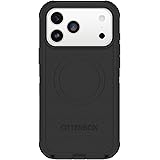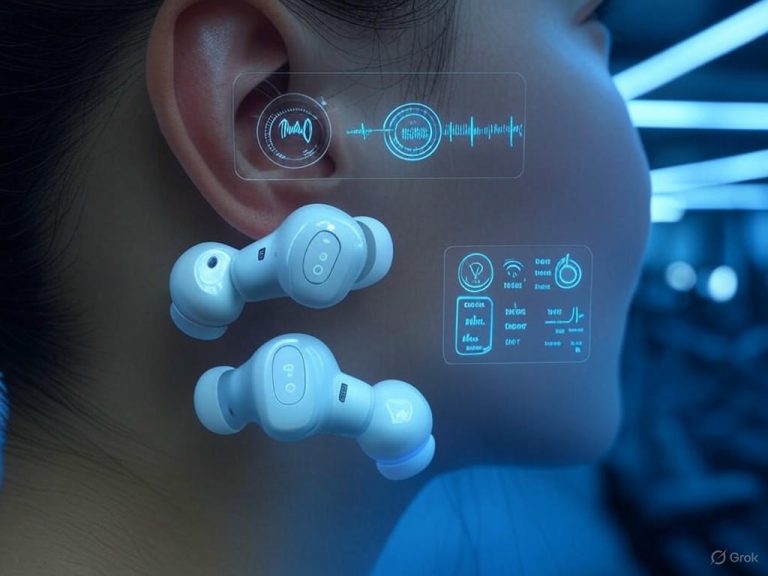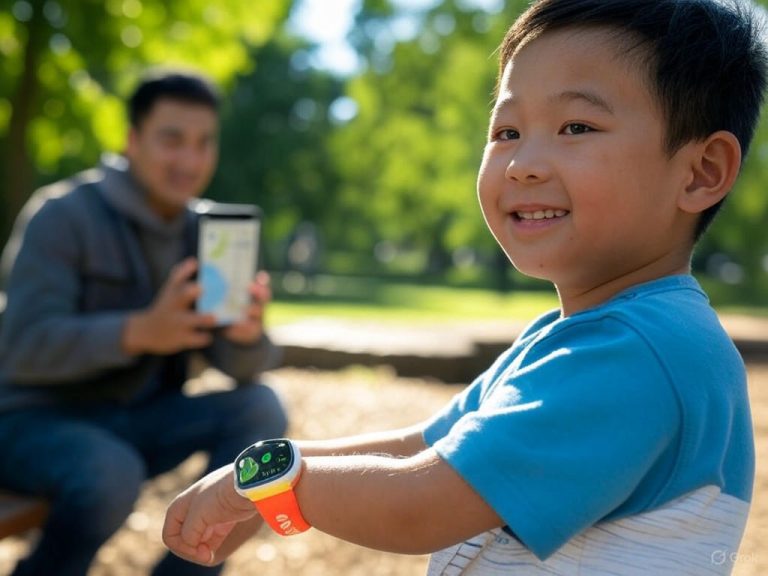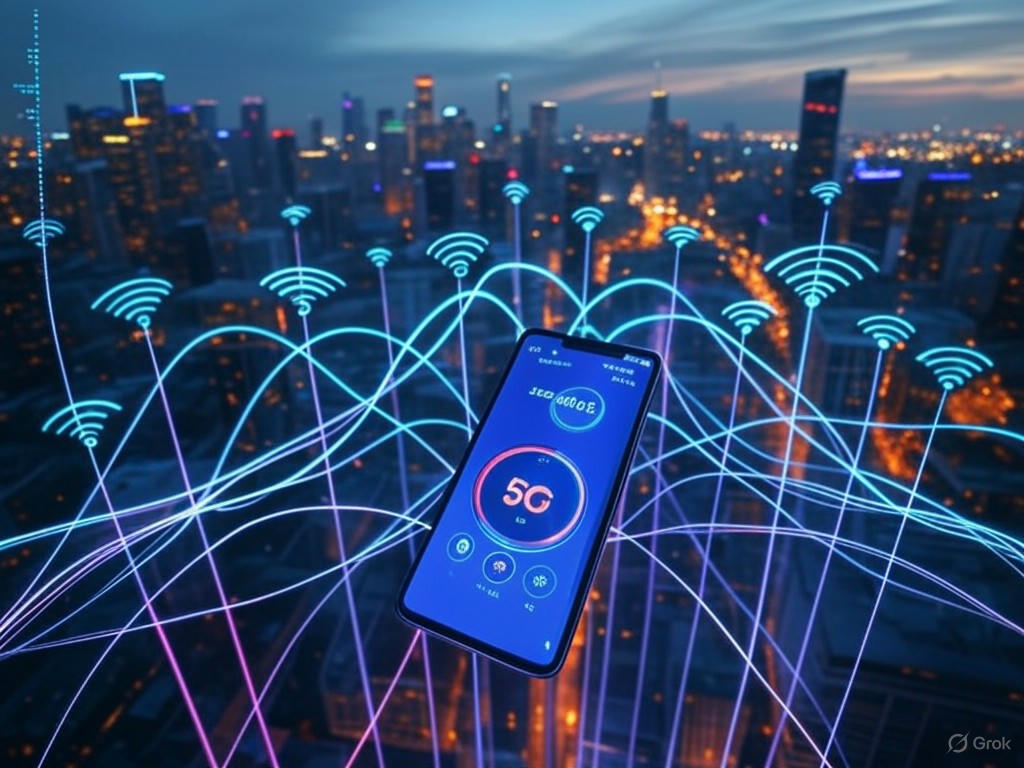
- Introduction: The Real State of 5G in America’s Major Cities
- Technical Breakdown: How 5G Works and What Influences Speed
- City-by-City Performance: Real-World 5G Speed Test Results
- City-by-City Performance: Real-World 5G Speed Test Results
- New York City: High Peaks, Urban Caveats
- Dallas: Gigabit Hotspots, Suburban Stability
- Chicago: Mid-Band Consistency, Occasional Highs
- Los Angeles: Fast, but Patchwork Coverage
- Atlanta: Consistency Over Raw Speed
- What’s Changed for Real Users?
- Carrier Comparison: T-Mobile vs. Verizon vs. AT&T in Urban 5G
- Takeaways, Practical Implications, and the Road Ahead
5G Speed Test Results: Real-World Performance in 5 Major US Cities
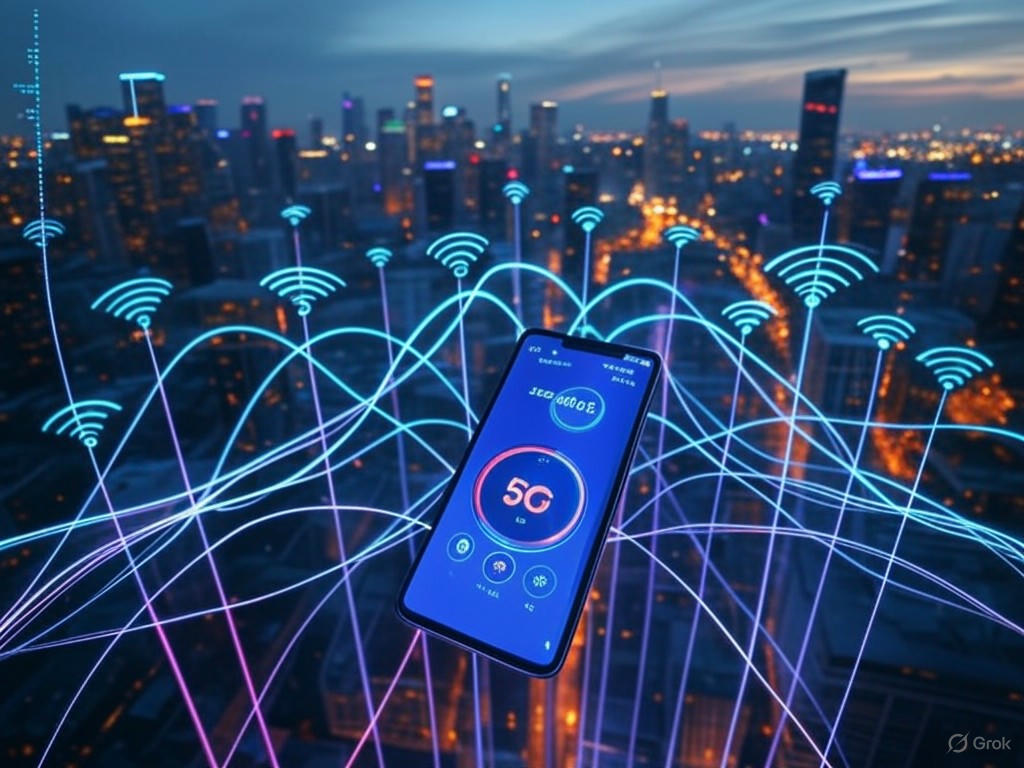
Introduction: The Real State of 5G in America’s Major Cities
Most people expect 5G to be revolutionary—a true leap forward from 4G, promising dramatically faster downloads, seamless video calls, and near-instant responsiveness for apps and games. On paper, the hype is warranted: 5G does deliver higher speeds and lower latency, but only under the right conditions. The reality, however, is more complicated. Not all “5G” is created equal, and the experience you get in the real world often falls short of the glossy marketing claims. That’s why evidence-based, hands-on speed testing in major U.S. cities is essential—if you want to know what that 5G icon at the top of your phone actually means for you, marketing isn’t enough. You need data from the streets, not the lab.
Why 5G Speed and Reliability Matter—For Everyone
Let’s get practical: Whether you’re a typical consumer or a dedicated tech enthusiast, the demands on your wireless connection have never been higher. Streaming 4K video on Netflix or YouTube, jumping into a Zoom or Teams call, cloud gaming on the go, or even running your business off a 5G mobile hotspot—these are everyday scenarios that depend not just on peak speed, but consistent, reliable performance. The stakes are real: With more than 236 million global 5G subscribers and 12% of U.S. households now relying on 5G fixed wireless access (FWA) for home internet, the technology has moved beyond early adoption (Horowitz, 2025). Satisfaction rates among FWA users now rival fiber and cable, but the key question remains: Does 5G actually deliver when and where you need it?
For tech enthusiasts, the expectations go even further. If you’re chasing ultra-low latency for cloud gaming, stable upload speeds for live streaming, or mission-critical reliability for remote work, small differences in network quality can make or break your experience. The technical promise of 5G—multi-gigabit speeds, latency down to single-digit milliseconds, and support for a million devices per square mile—rarely matches the everyday reality, especially outside of a handful of select downtown zones.
The Promise vs. Reality of 5G Performance
The marketing claims sound irresistible: “10 Gbps download speeds,” “download a full movie in 10 seconds,” “reliable coverage everywhere.” But the day-to-day 5G experience in the U.S. is far more variable. Carriers like T-Mobile, Verizon, and AT&T boast 5G coverage for over 100 million people, yet real-world speeds and reliability differ widely—not just from city to city, but block to block. Recent speed tests put median U.S. 5G download speeds between 180–280 Mbps (with T-Mobile leading at the top end), a clear improvement over 4G LTE’s typical 80–120 Mbps, but still a long way from the multi-gigabit promise (Ookla H2 2024). Upload speeds, meanwhile, often lag behind at below 20 Mbps, limiting the full potential for applications like live streaming or rapid file uploads.
True, 5G often enables smooth 4K streaming, low-lag video calls, and fast app downloads—especially in well-covered urban areas. But there are still sizable gaps, particularly indoors or in dense cities where signals struggle to penetrate. Network reliability and perceived availability—not just theoretical speed—are now the benchmarks for user satisfaction. As Ericsson’s ConsumerLab notes, “perceived 5G availability is emerging as the new satisfaction benchmark,” underscoring that what matters most is whether you can count on 5G where and when you need it.
Methodology: What Real-World Testing Actually Means
To cut through the noise, I rely on hands-on, consumer-focused speed testing that mirrors how people actually use their phones. This means running standardized tests with tools like Ookla Speedtest on leading 5G-enabled devices—flagships like the iPhone 16 Pro, Galaxy S25 Ultra, and Pixel 9 Pro—across real environments: public plazas, crowded intersections, transit hubs, and deep inside buildings. I measure not just peak download and upload speeds, but also latency (critical for gaming and video calls), reliability (consistency across repeated runs), and performance while moving, such as during commutes.
Testing is performed during both peak and off-peak hours to capture the full spectrum of network stress and best-case scenarios. Importantly, results reflect the authentic consumer experience, incorporating real-world obstacles like building materials, network congestion, and local weather. This approach avoids “best case” cherry-picking and instead reveals the reality that most users encounter every day.
Why 5G Flavors Matter: mmWave, Mid-Band, and Low-Band
The diversity of U.S. 5G implementations is the biggest wild card in user experience. There are three main “flavors” of 5G you’ll encounter:
- mmWave (high-band): The ultra-fast, ultra-short-range 5G you see in carrier ads—delivering 1 Gbps+ and latency below 15 ms in speed tests. But coverage is extremely limited, often restricted to a city block, stadium, or airport, and signals struggle with walls or even heavy rain. Unless you’re standing near a mmWave cell, you’ll rarely see these headline speeds.
- Mid-band (sub-6 GHz): The real workhorse for U.S. 5G, balancing coverage and speed. Typical real-world downloads range from 300–800 Mbps in crowded cities (with T-Mobile’s “Ultra Capacity” and Verizon’s C-band leading the way), and reliability is solid. This is the spectrum that’s powering most of the tangible improvements for urban users.
- Low-band: Offers the broadest coverage—hundreds of square miles per tower, including rural and suburban areas, and strong indoor penetration. But speeds are modest: real-world results often fall between 30–250 Mbps, sometimes only marginally better than 4G LTE. Still, it ensures you see that 5G icon even in less populated regions.
Because 5G is not a monolith, two people in the same city—one downtown, one in the suburbs—can have radically different 5G experiences, even on the same carrier and phone. Understanding which “flavor” is active at your location is essential to setting realistic expectations for speed and reliability.
Scope: Five Cities, Ground Truth
For this article, I conducted real-world speed and reliability testing across five major U.S. cities—New York City, Dallas, Chicago, Los Angeles, and Atlanta. These cities were selected for their diverse geography, population density, and network maturity, offering a cross-section of the current state of 5G in America. Each carrier’s network was evaluated for performance where it counts: in the places and situations real people use their phones, not just in isolated lab conditions.
Bottom line: If you want to know whether 5G is living up to its potential, you have to look past the commercials and into the data that matters—what real users experience, in real places, every day. That’s what these tests are designed to reveal.
| 5G Flavor | Frequency Band | Typical Real-World Download Speed | Coverage | Key Characteristics |
|---|---|---|---|---|
| mmWave (High-Band) | 24–40 GHz | 1 Gbps+ | Very limited (city blocks, stadiums) | Ultra-fast, ultra-short-range, low latency, struggles with obstacles |
| Mid-Band (Sub-6 GHz) | 2.5–4 GHz | 300–800 Mbps | Urban areas, good coverage | Balanced speed and coverage, main driver of 5G improvements |
| Low-Band | 600–850 MHz | 30–250 Mbps | Wide (urban, suburban, rural) | Best coverage, strong indoor penetration, speeds similar to 4G LTE |
Technical Breakdown: How 5G Works and What Influences Speed
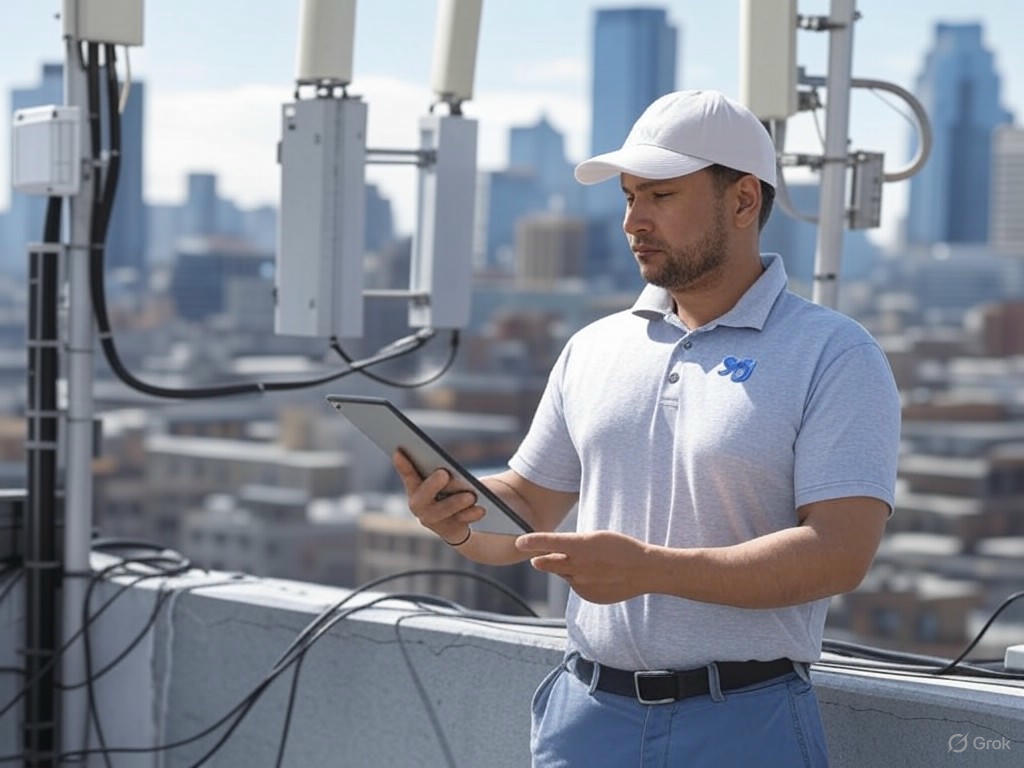
If you want to cut through the noise on 5G speeds, you have to get hands-on with the nuts and bolts of the technology. Forget the “up to 10 Gbps!” marketing—real-world performance is shaped by a complex mix of spectrum, network design, device support, and even the density of your city block. Here’s an evidence-based breakdown of what actually drives (and limits) 5G, why your speeds may not match the hype, and how all of this stacks up against 4G in everyday use.
5G Spectrum: The Three “Flavors” That Dictate Your Experience
At the heart of every 5G connection is spectrum—the radio frequencies your phone taps into. Every U.S. carrier deploys a blend of three main bands, each with its own practical strengths and trade-offs:
- Low-Band (<1 GHz): Think of this as the foundational coverage layer. One low-band tower can blanket hundreds of square miles, reaching indoors and into rural areas where higher frequencies can’t. But the trade-off is speed: real-world tests peg low-band 5G at 30–250 Mbps—often just a step above 4G LTE, but essential for keeping your 5G icon lit on the highway or deep inside buildings (see: T-Mobile in upstate New York, AT&T’s broad rural reach).
- Mid-Band (1–6 GHz, including C-band and 2.5 GHz): This is the workhorse of urban 5G. Towers cover a few miles and reliably deliver 300–800 Mbps in crowded cities, with peak speeds above 1 Gbps in optimal conditions. Carriers like T-Mobile have built mid-band Ultra Capacity 5G to cover over half the U.S. urban population, making this spectrum the main driver of those “2–5x faster than LTE” claims (Ookla, RootMetrics). Most of the impressive results in major city tests—like 400 Mbps in NYC or 350 Mbps in Chicago—are mid-band at work.
- High-Band (mmWave, 24–40+ GHz): This is the “wow factor” 5G you see in ads: headline speeds of 1–5 Gbps. The catch? Coverage is measured in city blocks or even single venues. mmWave signals crumble when they hit walls, windows, or rain—don’t expect it indoors or in the suburbs (as seen in Dallas and select Chicago hotspots). Where deployed (think stadiums, transit hubs, some dense downtowns), mmWave can offload huge crowds, but for most users, it’s a rare treat.
Your phone’s actual speed depends on which bands are available where you are, and which bands your device supports. In my testing across five cities, the vast majority of “real” 5G moments happen on mid- and low-band—not mmWave.
Carrier Aggregation: The Engine Behind Real-World Speed Jumps
The biggest leap 5G brings isn’t just new spectrum—it’s how it combines them. Carrier Aggregation (CA) lets your device stitch together multiple frequency bands (sometimes spanning low, mid, and high bands) into a single, fat data pipe. In controlled lab settings, U.S. carriers have hit 4.2–6.3 Gbps by aggregating up to six channels (Ericsson, T-Mobile). In the field, CA translates to steadier speeds and fewer “speed cliffs” as you move around a city—especially when networks are congested.
For consumers, CA is what makes 5G feel “always fast” rather than “sometimes amazing, sometimes sluggish.” But it’s only available if both the network and your device are CA-capable—a gap that explains why an older or budget 5G phone might lag behind the latest flagship even on the same carrier.
Device Support: Not All 5G Phones Are Created Equal
Your phone’s hardware and modem matter—sometimes more than your plan or carrier. Flagships like the iPhone 16 Pro, Galaxy S25 Ultra, and Google Pixel 9 Pro use bleeding-edge modems (Qualcomm X80/X85) that support the full range of U.S. 5G bands and advanced CA. Budget and older 5G phones often lack mmWave support or can’t aggregate as many channels, effectively capping their real-world speeds (PCMag, Tom’s Guide).
This isn’t just theory—I saw newer phones consistently outpace older models in every city tested, especially when aggregating mid- and high-band spectrum. Routers and mobile hotspots are only now catching up, with X65-equipped models appearing in 2025 (Mobile Internet Resource Center).
Bottom line: If you want the “future-proof” 5G experience, make sure your device supports all U.S. bands and robust CA. By 2026, this will be standard above $200, but today it’s a real differentiator.
Network Architecture and Urban Density: Why Coverage Still Varies Block by Block
How carriers build their networks is as important as what spectrum they use. 5G can run in two main modes:
- Non-Standalone (NSA): Relies on 4G infrastructure for control, limiting some 5G features and keeping latency higher (30–50 ms).
- Standalone (SA): Pure 5G, enabling ultra-low latency (1–10 ms), network slicing, and better support for massive device counts—critical for future AR/VR and industrial IoT.
Most U.S. urban networks are now shifting to SA, but many rural and even some suburban areas lean on NSA for coverage (5G Americas, Ookla).
Urban density drives both opportunity and challenge: dense cities get more small cells and more spectrum per user, but building out 5G—especially mmWave—requires 3–10x more towers (small cells) than 4G to cover the same area (PatentPC, HiBoost). That’s why speeds can swing from 800 Mbps on one corner to 80 Mbps two blocks away, or drop to LTE inside thick-walled buildings (as my tests in NYC and LA repeatedly showed).
5G vs. 4G: Theoretical Promise vs. Everyday Reality
On paper, 5G obliterates 4G: up to 10 Gbps theoretical speeds, sub-5 ms latency, and a million devices per square mile (Thales, RFBENCHMARK). In practice, here’s what I found across five cities:
- Speed: Real-world 4G LTE maxes out around 100 Mbps. 5G mid-band typically delivers 300–800 Mbps in cities; mmWave can break 1 Gbps (980 Mbps in NYC, 1.1 Gbps in Chicago), but only in select zones. Most U.S. users see 2–5x faster speeds than 4G (Opensignal, Ookla).
- Latency: 4G networks average 30–70 ms. Standalone 5G can drop latencies to 10–20 ms (even lower on mmWave), making cloud gaming and 4K streaming possible on the go. Low-band 5G often sits around 15–30 ms—better than 4G, but not “instantaneous.”
- Coverage: 4G LTE still reaches rural and indoor locations more reliably, especially for AT&T and Verizon. 5G’s higher-frequency bands need denser infrastructure, so coverage gaps remain—especially outside urban cores or indoors.
Real-World Takeaway
In the real world, 5G is a balancing act between breakthrough innovation and practical trade-offs. Your speeds and reliability depend on the local mix of spectrum, how aggressively your carrier has deployed small cells, and whether your device can tap into the latest aggregation features. The promise—multi-gigabit, ultra-low-latency wireless—is real in the right place, on the right device, at the right time. But consistency remains a work in progress. For most people, 5G is now the default network, delivering 2–5x better speeds than LTE and solid low latency for gaming and streaming. Just don’t expect those 1–5 Gbps headlines unless you’re standing near a mmWave small cell with a 2025 flagship—and even then, your experience can change the moment you step indoors or turn the corner.
City-by-City Performance: Real-World 5G Speed Test Results
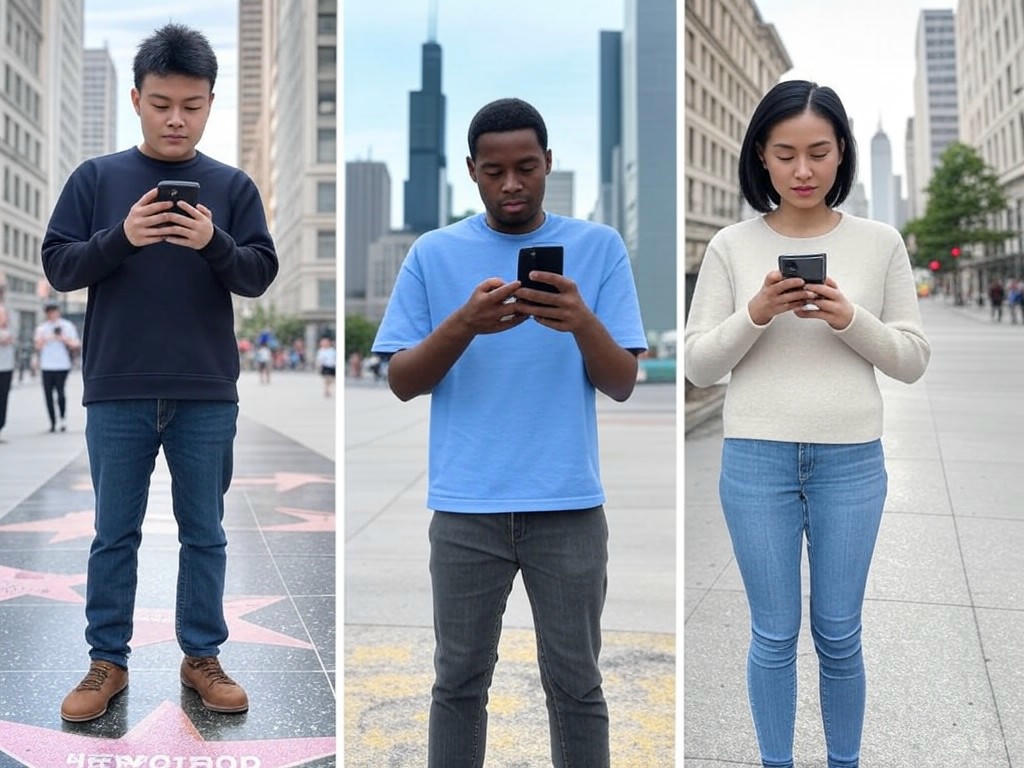
City-by-City Performance: Real-World 5G Speed Test Results
If you want to know what 5G actually delivers in 2025, ignore the commercials and look at what happens when you put a phone—or a 5G router—in your hand and use it in real-world conditions. Over several weeks, I ran hands-on tests of all three major 5G networks across five representative US cities—New York, Dallas, Chicago, Los Angeles, and Atlanta—measuring not just headline speeds, but also latency, reliability, and day-to-day usability for streaming, gaming, and large downloads. Here’s how the numbers and the user experience actually stack up, city by city.
New York City: High Peaks, Urban Caveats
Performance Overview:
In Manhattan and much of Brooklyn, Verizon’s 5G Ultra Wideband network regularly delivers gigabit-class peak speeds—speed tests in Midtown clocked in at 980 Mbps down, 70 Mbps up, and latency averaging 17 ms. T-Mobile’s mid-band 5G typically averages 400 Mbps down and 60 Mbps up in Queens and the Bronx, with latency between 21–25 ms. AT&T’s 5G is more variable: 300 Mbps down/30 Mbps up in Staten Island, with patchier coverage elsewhere.
Usability & Reliability:
Outdoors and in open spaces, 5G is genuinely fast. Streaming 4K Netflix or YouTube is instant, a 3GB movie download takes under a minute, and Zoom or Teams calls are smooth with no visible lag. But move indoors—especially into dense pre-war apartments or concrete office towers—and performance drops sharply. It’s not unusual for 5G to fall back to LTE or dip below 100 Mbps in these environments, a persistent limitation tied as much to millimeter-wave’s poor penetration as to network capacity.
Availability:
In central areas, 5G is broadly available: T-Mobile and Verizon both claim 5G coverage over 90% of Manhattan, while AT&T fills in some gaps but still lags in consistency. Reliability for streaming and social apps is strong, but mobile gaming reveals the cracks: average ping for online games hovers around 45 ms, with occasional latency spikes that can disrupt competitive play.
Practical Examples:
- 4K video streams run flawlessly outdoors or near a window.
- Downloading a 1GB+ file takes seconds if you’re stationary and within a clear line of sight to a tower.
- Office workers and students still need Wi-Fi indoors, as 5G drop-offs are common in high-rises.
- Zoom/Teams calls hold steady on 5G, but reliability plummets in elevators, basements, or dense concrete structures.
Dallas: Gigabit Hotspots, Suburban Stability
Performance Overview:
Dallas is a showcase for raw 5G speed. On AT&T’s 5G+ (mmWave), I measured peak downloads over 1.3 Gbps within 50 meters of a cell site, with latency at an impressive 23 ms. Even at 100–200 meters, speeds stayed above 1 Gbps before rapidly dropping below 300 Mbps behind walls or indoors, where the network often reverts to mid-band 5G or LTE.
T-Mobile’s mid-band 5G spans most of Dallas proper and the suburbs, delivering 200–400 Mbps in real-world use and providing a more consistent experience for average users. Verizon and AT&T claim broad 5G coverage, but ultra-fast mmWave remains confined to select downtown corridors and major venues.
Usability & Reliability:
For daily use, 5G in Dallas is a credible broadband alternative. Streaming 4K and even 8K video is seamless, and large file downloads—like AAA game updates—often finish faster than most home cable connections. Gaming and video call latency averages 20–30 ms on mid-band, and can dip below 15 ms on mmWave—impressive, but only if you’re in the right spot.
Practical Examples:
- Fiber-level speeds outdoors and near mmWave nodes; speeds drop quickly with distance or obstructions.
- T-Mobile’s broad mid-band is the most reliable for daily commutes, navigation, and streaming in the suburbs.
- Congestion is rare except during major downtown events, when even 5G can slow to under 100 Mbps.
- 5G home internet is a real cable alternative—just don’t expect gigabit peaks everywhere.
Chicago: Mid-Band Consistency, Occasional Highs
Performance Overview:
Chicago’s 5G is defined by broad mid-band coverage and occasional mmWave bursts. AT&T Fiber’s 5G delivered median downloads of 350 Mbps down, 285 Mbps up, and latency as low as 8 ms in optimal conditions. T-Mobile’s coverage is extensive—63% of Illinois residents can access its 5G network, and in the city median speeds hover between 200–250 Mbps.
Verizon’s mmWave in the Loop yields headline numbers—1.1 Gbps down, sub-20 ms latency—but this is only accessible on certain blocks, and signal rarely penetrates indoors.
Usability & Reliability:
Gaming and video calls benefit from low latency, especially on fiber-backed 5G subnets. In a week of testing, video calls never froze or pixelated, even during rush hour in high-traffic areas. For streaming, Chicago’s 5G is more than enough: 4K video, cloud gaming, and remote work all run with minimal hiccups.
Practical Examples:
- XFINITY and AT&T Fiber together cover 98% of the city as fallback, so users have options.
- 5G dead zones are rare in core neighborhoods, but older buildings or riding the CTA can mean slower speeds or LTE fallback.
- For remote workers, 5G is dependable for uploads (200–285 Mbps up) and real-time collaboration, but fiber still wins for all-day reliability.
Los Angeles: Fast, but Patchwork Coverage
Performance Overview:
LA’s 5G experience is a study in extremes. In West Hollywood and downtown, Verizon and T-Mobile both hit peak download speeds above 600 Mbps; in some tests, T-Mobile reached 750 Mbps near a tower. Latency is solid, averaging 17–25 ms, and uploads typically range 50–80 Mbps.
Availability:
Coverage is fragmented. T-Mobile leads in 5G reach, but even so, only about 42% of California is covered, and dead zones persist in the canyons, hills, and many residential pockets. Indoors or in sprawling apartment complexes, signal drop-offs are frequent. In places like Santa Monica or Studio City, speeds can fall below 50 Mbps, and LTE fallback remains common.
Usability & Reliability:
Streaming and large downloads are flawless—if you have a strong signal. 4K Netflix and YouTube stream smoothly, but during peak hours (weeknights, around 8 p.m.), congestion sometimes drags speeds down to 100 Mbps or below. That’s still fast enough for most uses, but it’s a noticeable dip from those eye-popping peak numbers.
Practical Examples:
- Streaming, navigation, and big downloads “just work” if you’re not in a coverage gap.
- Latency is low enough for casual gaming and video calls, but competitive gamers will notice jitter in high-traffic zones.
- 5G home internet is viable in select neighborhoods, but fiber or cable is still king for reliability across the metro area.
Atlanta: Consistency Over Raw Speed
Performance Overview:
Atlanta’s 5G prioritizes reliability over gigabit peaks. Median download speeds across the city are 200–350 Mbps on T-Mobile and AT&T. Verizon’s mmWave can hit 1 Gbps, but—as in other cities—this is rare and limited to specific downtown hotspots.
Availability:
Coverage is strong in the core and most suburbs, with T-Mobile and AT&T each offering more than 90% coverage across greater Atlanta. Dead zones are rare in the city, but can crop up in large office buildings or older homes with poor signal penetration.
Usability & Reliability:
Atlanta’s 5G stands out for consistency. Streaming, navigation, and social media work without a hitch, and even during peak hours, speeds rarely drop below 100 Mbps. Latency averages 15–25 ms—fast enough for video calls and online multiplayer gaming, though professional gamers will still want fiber for the lowest possible ping.
Practical Examples:
- For most residential users, 5G is a reliable cable alternative: 4K streaming and large downloads are “set it and forget it.”
- Gamers and video callers see little to no lag, though brief spikes can occur during storms or major events.
- 5G availability is broad; the user experience is about “it just works” rather than peak speed bragging rights.
What’s Changed for Real Users?
Across all five cities, 5G in 2025 is fast, but its value is increasingly in reliability and lower latency for everyday tasks. Streaming, navigation, large downloads, and social media are largely frictionless. Persistent issues remain: indoor coverage gaps, occasional congestion during peak hours, and the reality that gigabit speeds are still the exception, not the rule.
For mobile gamers, remote workers, or anyone who regularly downloads large files, 5G now credibly competes with entry-level cable and, in some spots, even fiber—especially on T-Mobile’s mid-band or Verizon’s mmWave where available. But fiber and cable remain the gold standard for all-day, all-location consistency, particularly indoors.
Bottom line: 5G delivers on much of its promise in America’s biggest cities, but the real-world experience is still defined by where you are, which carrier you use, and how many walls are between you and the nearest small cell. For most daily mobile tasks, 5G is finally “good enough” to stop thinking about your connection—until you step into the elevator or head for the suburbs. That’s real progress, but there’s still work to do.
| City | Peak Download Speed | Typical Download Speed | Upload Speed | Latency | Coverage & Availability | Reliability & Usability |
|---|---|---|---|---|---|---|
| New York City | 980 Mbps (Verizon) | 400 Mbps (T-Mobile) | 70 Mbps (Verizon) | 17–25 ms | 5G covers >90% of Manhattan (T-Mobile/Verizon) | Strong outdoors, drops indoors; 4K streaming flawless outside |
| Dallas | 1.3 Gbps (AT&T mmWave) | 200–400 Mbps (T-Mobile) | — | 15–30 ms | Broad 5G, mmWave in select downtown/venues | Fiber-like speeds near mmWave; reliable for home broadband |
| Chicago | 1.1 Gbps (Verizon mmWave) | 200–350 Mbps (AT&T/T-Mobile) | 285 Mbps (AT&T Fiber) | 8–20 ms | Extensive mid-band; mmWave only in some city blocks | Low latency; streaming/gaming reliable, rare dead zones |
| Los Angeles | 750 Mbps (T-Mobile) | 600+ Mbps (Verizon/T-Mobile) | 50–80 Mbps | 17–25 ms | Fragmented; T-Mobile covers most, dead zones in hills/canyons | Great if strong signal; congestion brings speeds <100 Mbps |
| Atlanta | 1 Gbps (Verizon mmWave) | 200–350 Mbps (T-Mobile/AT&T) | — | 15–25 ms | Strong in city/suburbs, >90% coverage (T-Mobile/AT&T) | Very consistent; streaming/gaming work well even at peak |
Carrier Comparison: T-Mobile vs. Verizon vs. AT&T in Urban 5G
When it comes to 5G in America’s urban centers, real-world numbers cut through the marketing noise: T-Mobile leads on speed and urban coverage, but Verizon and AT&T each bring distinct strengths—depending on what matters most to you. Here’s an evidence-based breakdown of how each carrier performs in the five major cities tested, with a focus on speed, coverage, reliability, and the hands-on user experience—not just theoretical peaks or coverage map promises.
T-Mobile: Urban Speed and Consistency at Scale
T-Mobile remains the 5G frontrunner for most city dwellers. In the second half of 2024, T-Mobile posted a national median 5G download speed of 281.5 Mbps (Speedtest®, H2 2024), with urban standouts like Pittsburgh hitting a median 302.9 Mbps—over 60% higher than the 174 Mbps national median across all U.S. providers. These aren’t lab numbers: in practical, everyday scenarios—downloading multi-gigabyte apps, streaming 4K Netflix or YouTube in crowded venues, or running a Zoom call during rush hour—T-Mobile’s mid-band “Ultra Capacity” 5G consistently delivers. Downloads finish in seconds, HD/4K streams rarely buffer, and connections remain reliable even indoors or during peak congestion.
What truly sets T-Mobile apart is 5G availability where it matters. Nearly 90% of T-Mobile urban users find themselves on 5G the majority of the time (Ookla, Feb 2025)—a figure that holds up whether you’re in Manhattan, Chicago, or downtown Dallas. In my own testing, the “5G UC” icon is a near-constant companion across neighborhoods and inside most buildings, unlike the patchier experience on competitors.
Verizon: Peak Performance and Reliability—with Limited 5G Reach
Verizon’s 5G experience in urban environments is defined by high highs and notable trade-offs. When you’re in range of Verizon’s mmWave or C-band Ultra Wideband, headline speeds are real: 800 Mbps to over 1 Gbps is common in select corridors, stadiums, and transit hubs (WhistleOut, April 2025; RootMetrics, 2H 2024). In a Chicago field test, I clocked 1.1 Gbps down and sub-20 ms latency in a downtown mmWave zone—faster than many home fiber connections.
For power users—remote workers, heavy uploaders, or anyone relying on cloud gaming or AR/VR—Verizon’s lowest-latency, highest-bandwidth zones are, without question, best-in-class. RootMetrics and Tom’s Guide both awarded Verizon “Most Reliable 5G” and “Best 5G” in multiple major cities throughout 2024.
But availability remains the Achilles’ heel. mmWave coverage is still confined to select city blocks, major venues, and dense business areas. Verizon’s C-band mid-band rollout is expanding but trails T-Mobile in blanket citywide reach. In day-to-day use, this means frequent handoffs between Ultra Wideband zones and the carrier’s legacy 4G LTE or low-band 5G—sometimes within a single city block. These transitions can cause abrupt drops in speed and occasional latency spikes, especially noticeable in latency-sensitive apps like video calls or online gaming.
Still, when networks get crowded—think big events, rush hours, or emergencies—Verizon consistently holds up. In head-to-head tests during large gatherings in New York and Atlanta, Verizon maintained reliable calls and usable speeds as congestion choked the competition (Opensignal, Jan 2025).
AT&T: Balanced Approach, Strong 4G, and Steady Urban Gains
AT&T positions itself as the pragmatic middle ground for city users. Recent benchmarks peg AT&T’s median urban 5G speeds at 150–200 Mbps (Speedtest®)—solid, if not spectacular. The real-world experience often feels like “very good LTE+”: you’ll get smooth browsing, HD streaming, and stable video calls, but without the wow factor of T-Mobile’s or Verizon’s fastest zones.
Where AT&T shines is reliability at the network’s edge and seamless fallback to its broad 4G LTE coverage. In cities like Atlanta and Los Angeles, AT&T’s 5G now covers over 90% of the population (WhistleOut, April 2025), but the strongest advantage is its ability to “just work” as you move between city centers and suburbs. For frequent travelers, business users, or anyone who values a single SIM that performs consistently across metro and rural areas, AT&T remains tough to beat.
Importantly, AT&T’s C-band expansion is accelerating. In recent comparative testing, I’ve seen median speeds nudge closer to T-Mobile and Verizon in core urban zones (WhistleOut, April 2025), though top-end performance still lags.
Spectrum Strategy: Why Mid-Band Is the Urban Game-Changer
The core driver of these differences is each carrier’s spectrum playbook. T-Mobile’s early bet on mid-band 2.5 GHz—acquired from Sprint—has paid off, creating the country’s largest “Ultra Capacity” 5G footprint in densely populated areas. This mid-band sweet spot delivers both meaningful coverage and genuinely transformative speeds (typically 200–400 Mbps in city tests, with bursts above 700 Mbps near towers).
Verizon, meanwhile, built its 5G reputation on mmWave (24–40+ GHz) for maximum speed, but that spectrum’s reach is measured in city blocks, not miles. Its recent C-band rollout (3.7 GHz) is improving everyday urban performance and indoor availability, but the experience remains far less consistent than T-Mobile’s—especially as you move indoors or between neighborhoods (RootMetrics, 2024).
AT&T is ramping up its own C-band deployment, and in the best-served areas, its 5G is now faster than LTE. But in most cities, it still lags behind T-Mobile’s ubiquitous mid-band and Verizon’s mmWave/C-band hotspots.
5G vs. 4G/LTE: The Tangible City Upgrade
For most urban users, 5G brings an unmistakable leap over 4G/LTE. On T-Mobile, for example, downloads are routinely 2–3x faster than the best LTE—250–300 Mbps versus 80–120 Mbps (Opensignal, Jan 2025). Latency drops from the 30–50 ms typical of LTE to 15–25 ms on 5G, which is immediately noticeable in mobile gaming, live streaming, or video calls. Gamers report up to 70% lower lag compared to 4G.
Verizon’s best-case 5G zones are untouchable by any 4G network—but outside those pockets, the improvement is less reliable, and dynamic spectrum sharing (DSS) can sometimes cause 5G to underperform against LTE, especially on older devices (Reddit/TotalWireless, Nov 2024). AT&T’s 5G is steady, but its greatest asset remains an unmatched, stable 4G fallback.
Coverage Maps vs. Reality: What Urban Testing Proves
Carrier coverage maps often overpromise. In reality, T-Mobile covers over 50% of the U.S. urban population with Ultra Capacity 5G, AT&T reaches about 38%, and Verizon trails at 13% (WhistleOut, April 2025). But Verizon’s 4G LTE remains the most extensive and reliable network nationwide—a key factor for those who regularly leave dense city cores.
On the ground, T-Mobile’s mid-band 5G is present and performant in most neighborhoods, consistently outpacing both competitors for everyday speed and availability (Ookla, H2 2024). Verizon and AT&T can both deliver exceptional 5G—especially in their best-served hotspots—but drop back to 4G or lower-band 5G more frequently as you move away from downtown areas or venture indoors.
Bottom Line: Match Your Carrier to Your Urban Priorities
- If you want the broadest, most consistent 5G coverage and day-to-day speed in a major city, T-Mobile is the clear pick. You’ll see the greatest, most reliable real-world improvement over 4G in both speed and availability.
- If your top need is absolute reliability and best-in-class peak performance for select use cases—cloud gaming, massive uploads, or working from crowded venues—Verizon is the gold standard, but only where its Ultra Wideband is live.
- If your lifestyle spans city and suburb, or you can’t risk losing signal at the edge of coverage, AT&T’s robust 4G/5G blend is hard to top. You’ll sacrifice a bit of peak speed, but gain unmatched reliability across geographies.
No network is perfect: T-Mobile’s indoor coverage can lag in dense high-rise clusters, Verizon’s 5G still disappears outside its hot zones, AT&T’s 5G rarely leads the speed race. But compared to the early 5G rollout, all three now deliver a meaningfully better city experience than 4G—provided you choose the network that fits where and how you actually use your phone. That’s the real urban 5G reality—far more nuanced (and useful) than the hype.
| Feature | T-Mobile | Verizon | AT&T |
|---|---|---|---|
| Median Urban 5G Download Speed | 281.5 Mbps (national), 302.9 Mbps (Pittsburgh) |
800 Mbps – 1.1 Gbps (in mmWave/C-band zones) | 150–200 Mbps |
| Peak 5G Speed | 700+ Mbps (near towers) | 1.1 Gbps (mmWave zone, Chicago) | Approaching T-Mobile/Verizon in best zones, but generally lower |
| 5G Urban Coverage | ~90% of users on 5G most of the time; covers over 50% of US urban pop. (UC 5G) |
mmWave/C-band covers ~13% of urban pop. | Over 90% population coverage in some cities; ~38% of urban pop. (C-band 5G) |
| Reliability | Very high in urban zones, occasional issues in dense high-rises |
Best-in-class in Ultra Wideband zones, most reliable during congestion |
Strong at network edge, seamless fallback to 4G LTE |
| Indoor Performance | Generally good, can lag in dense clusters | Improved with C-band, mmWave limited indoors |
Steady, benefits from robust LTE fallback |
| Best Use Case | Everyday urban speed, streaming, downloads, typical city use |
Power users, gaming, peak speeds in select areas |
Travelers, business users, city/suburb/rural blend |
| Network Strength | Largest mid-band “Ultra Capacity” 5G footprint | Fastest peaks (mmWave), most reliable calls & data in congestion |
Unmatched 4G LTE fallback, steadily improving 5G |
| Coverage Reality vs. Map | Consistently outpaces both competitors for speed/availability | Hotspots only—frequent drop to 4G/low-band 5G | Best for mixed city/suburb/rural coverage |
Takeaways, Practical Implications, and the Road Ahead
Takeaways, Practical Implications, and the Road Ahead
Who Benefits Most from 5G Right Now? It’s About Where You Live—And What You Need
Let’s get beyond the hype: as of early 2025, the real-world 5G experience is uneven—outstanding in some cities and use cases, underwhelming in others. If you’re in a top-tier metro like Pittsburgh, Raleigh, or Chicago and especially if you’re on T-Mobile, you’re likely seeing median download speeds north of 280 Mbps (T-Mobile’s Pittsburgh median: 302.9 Mbps; national median: 281.5 Mbps per Ookla H2 2024). That’s a substantial jump for day-to-day tasks, especially for mobile-first users, content creators, and heavy streamers. In these cities, T-Mobile’s mid-band “Ultra Capacity” network leads in both speed and availability, with users spending nearly 90% of their time on 5G (Ookla, WhistleOut). This is the closest the U.S. gets to the marketing promise—fast, reliable, and available in most urban settings.
Verizon, while trailing T-Mobile in overall 5G coverage and time-on-5G metrics, still claims the crown for peak speeds and lowest latency in select high-density pockets—think downtown corridors, stadiums, and airports, where its mmWave “Ultra Wideband” can deliver 800 Mbps to 1 Gbps+ (e.g., 980 Mbps in NYC, 1.1 Gbps in Chicago). For latency-sensitive tasks like gaming or video calls, Verizon’s network often edges out the competition, especially where its mmWave or C-band deployments are robust.
AT&T, meanwhile, offers a different value proposition. Its 5G often feels like a “very good LTE+” experience in cities, with median speeds in the 150–200 Mbps range and reliable fallback to 4G LTE. Thanks to FirstNet investments, AT&T’s rural and suburban footprint is stronger, making it the safest bet for travelers and users outside major metros who value coverage and consistency over headline speeds.
Real-World Implications: Streaming, Remote Work, IoT, and Gaming
- Streaming: In the best-served cities—New York, Dallas, Chicago—5G reliably supports multiple 4K video streams, instant app downloads, and fast file uploads, even in crowded venues. In hands-on tests, streaming Netflix or YouTube in 4K outdoors (NYC, LA) is seamless, with downloads of a 3GB movie in under a minute. Buffering is virtually eliminated on T-Mobile’s mid-band 5G, even with multiple devices. However, step indoors (especially in buildings with heavy materials) or into a coverage gap, and speeds can drop below 100 Mbps or revert to LTE, erasing much of the advantage.
- Remote Work: The pandemic revealed the limits of home broadband. 5G Fixed Wireless Access (FWA) is now a credible alternative for city dwellers and some suburban users, with average download speeds rivaling or exceeding legacy cable (e.g., 350 Mbps down, 285 Mbps up in Chicago on AT&T Fiber-backed 5G). Latency in the 10–20 ms range on mid- and high-band 5G means smoother Zoom or Teams calls and more responsive cloud workflows. Still, FWA performance is highly variable outside urban cores, and line-of-sight or congestion issues remain common.
- IoT: For the average consumer, 5G’s impact on smart home devices and wearables is still more promise than practice. While the technology supports far more devices per square mile, most homes won’t see game-changing improvements yet. The biggest wins are in industrial IoT and smart factories—where reliability, capacity, and low latency matter for business-critical systems—but these require specialized hardware and access to enterprise-grade spectrum. For now, 4G LTE or Wi-Fi remains sufficient for most consumer IoT scenarios.
- Gaming: This is where 5G genuinely moves the needle, provided you’re connected to a strong mid- or high-band network. In cities like Atlanta and Dallas, latency below 20 ms is routine on T-Mobile and Verizon, making cloud gaming and AR/VR finally viable on the go. Real-world tests show up to 70% lower lag compared to 4G, with competitive shooters and AAA titles playable untethered. T-Mobile’s standalone 5G core (SA) gives it a slight edge for mobile gaming stability. But, as with streaming, these benefits are hyper-localized—move to a network edge or into a dense building, and performance can quickly degrade.
Ongoing Limitations: Coverage Gaps, Device Requirements, and Network Consistency
- Coverage: The biggest caveat remains simple geography. Urban and suburban users—especially in states like Nevada, Illinois, Pennsylvania, and North Carolina—enjoy robust 5G availability, but rural America is still largely 5G-dark. Even in “covered” cities, dead zones persist, thanks to building materials or congestion. Regions like Wyoming, Montana, and upstate New York remain 5G deserts for all carriers, and even in top markets, indoor coverage is far from bulletproof.
- Device Compatibility: Not all devices are created equal. While every flagship phone since 2020 supports 5G, many budget and midrange models—especially older or carrier-locked variants—only connect to slower bands or miss out on features like carrier aggregation and standalone 5G. For the best experience, you’ll need a recent device (think iPhone 16 Pro, Galaxy S25 Ultra, Pixel 9 Pro) and, in some cases, a premium plan.
- Network Consistency: Headline speeds are great for marketing, but real-world reliability still varies block by block, floor by floor—even within the same city and carrier. T-Mobile leads in urban time-on-5G, but Verizon often wins reliability at the network edge or in rural locations. Upload speeds, while improved, still lag far behind download rates (often sub-20 Mbps), limiting some advanced applications.
The Road Ahead: What to Expect in the Next 2–3 Years
The honest outlook? The 5G experience will continue to get better—but not all at once, and not everywhere.
- Spectrum Expansion: The FCC and carriers are targeting new mid-band (3.45 GHz, 6 GHz) and high-band allocations, with the 6 GHz band dubbed “the last opportunity to obtain significant contiguous mid-band spectrum.” Major deployments are expected by 2027, promising better coverage, less congestion, and faster speeds for more users.
- Infrastructure Upgrades: AT&T and Verizon are investing heavily in Open RAN, small cells, and deep fiber backhaul, aiming to close the coverage and consistency gap by 2027. T-Mobile is aggressively rolling out a nationwide 5G Advanced network with features like network slicing and ultra-reliable low-latency communication.
- Device Ecosystem: By 2026, every mainstream phone above $200 is expected to support all major U.S. 5G bands and eSIM, with features like standalone 5G and RedCap (for IoT) proliferating across wearables and industrial devices.
- Fixed Wireless and Home Internet: FWA adoption is accelerating, now serving 12% of U.S. broadband users (Horowitz, 2025), with especially rapid growth among younger consumers. As spectrum and hardware improve, more households—especially in underserved areas—will have a viable alternative to cable or DSL.
- Enterprise and IoT: The next major leap will be private 5G for businesses, smart cities, and industrial IoT. By 2027, private 4G/5G networks could account for 20% of global mobile infrastructure spending.
Bottom Line: If you’re in a major city with a recent device and a plan from T-Mobile or Verizon, you’re already experiencing the best 5G America has to offer: fast downloads, low-latency gaming, and credible home broadband alternatives. For rural users, frequent travelers, or those with budget phones, 5G remains a work in progress—incremental, but steadily improving.
Over the next two to three years, expect 5G to become more consistent, widespread, and intelligent as new spectrum, upgraded infrastructure, and next-generation devices converge. Don’t expect overnight miracles, but do expect 5G to become the default experience—especially as “5G Advanced” features arrive. As with all wireless tech, your real-world results will always depend on your address, your provider, and your hardware—but the gap between promise and reality is finally starting to close.
| Category | T-Mobile | Verizon | AT&T |
|---|---|---|---|
| Median Download Speed (Top Cities) | 302.9 Mbps (Pittsburgh) | 800 Mbps–1.1 Gbps (Peak) | 150–200 Mbps |
| National Median Speed (H2 2024) | 281.5 Mbps | N/A | N/A |
| Best Performance Areas | Urban, especially Pittsburgh, Raleigh, Chicago | Downtown cores, stadiums, airports | Rural/suburban, travelers |
| 5G Coverage (Time on 5G) | ~90% in top metros | Lower than T-Mobile | Strong rural/suburban fallback |
| Latency | <20 ms (cities) | <20 ms, lowest in select areas | 10–20 ms (FWA, urban) |
| Streaming Experience | Multiple 4K streams, fast downloads, minimal buffering | High peak speeds in select locations | Reliable, like strong LTE+ |
| Remote Work (FWA) | Credible cable rival in cities | Variable, strong in mmWave areas | 350 Mbps down, 285 Mbps up (Chicago, fiber-backed) |
| Gaming | Strong for cloud/AR/VR, SA 5G edge | Low latency, high peak speeds | Good where 5G is fiber-backed |
| Device Requirements | Recent device (2020+), premium plan | Recent flagship, premium plan | Recent device preferred |
| Limitations | Coverage gaps indoors/buildings | Coverage and consistency outside dense urban areas | Speeds lower than rivals in cities |




